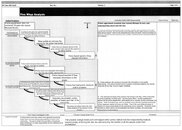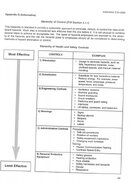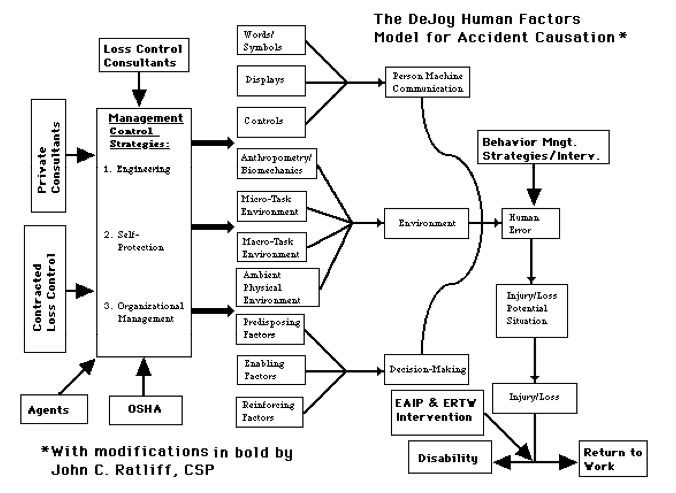I know what a cenote is. I'm a cave diver. I trained in Mexico. I have dived in Calavera. There is cave in Calavera. They found the body in the CAVE zone of the Calavera cenote beyond the reaper signs. The cave zone in Calavera at such a depth that embolizing while within the cave is so highly unlikely as to state that there would have to be serious extenuating circumstances, such as an already present lung over-expansion injury which would have prevented the dive in the first place. Other (cave) divers retrieved the body. Simply because their statements are not in the police report does not mean that they do not have the all of the information required to make an accurate estimation of the circumstances that lead to the divers death.
I know an awful lot about attention to detail. I'm a cave diver. I'm a rebreather diver. Detail is important in certain things. In this instance, detail is not important.
I know quite a few PJ's too (and fighter pilots, and weps guys, and TACP's, and all sorts of people who live and die by attention to details). If a PJ jumps out of a plane and never pulls his chute, he's dead because of the sudden stop. There may be reasons he did not deploy his chute, but aside from a medical event during freefall, it's still the stop that kills him. This is literally exactly the same thing, except it's drowning instead of the sudden deceleration. And in this case, there's nothing NEW to learn about how not to die in a cave. (And let's not get into semantics, if you start talking about AAD's not firing I'm hitting ignore.)
We don't need to analyze this most current diver death. We know all we need to know, he went into the cave, he was not trained, he did not have the right equipment, he died. What you want to do is assign blame (ironically you quote a post about "blamestorming") but you want to disguise it as "analysis."
I get the feeling that you're not a cave diver, not familiar with diving in Mexico, definitely not familiar with Calavera, and whatever "Professional Safety" experience you have, it has very little to do with cave diving, and thus in this case, irrelevant.
JohnnyC,
You have said a lot in five short paragraphs. Let me respond.
In your first paragraph, you state things that are not in the cited article. You appear to have communications with the cave divers who recovered the body. Is that correct? If so, it would have been helpful if you had said that. If not...
I'm glad you know about attention to detail, as with cave diving and rebreather diving, that is quite important. But it is also important in accident investigation. I'll get into that a bit later here.
Concerning PJs, I'm glad you know a couple. I was one from 1967 to 1975, so I know a bit about the subject too. SMSgt. Gorny talked to me about attention to detail when we were flying the first trans-Pacific flight of helicopters in 1970. You mentioned free fall parachuting; that was developed for Pararescue after I left the service (we used static line parachutes only during my time). But I have heard a lot about free fall parachuting. There are Hi-Low and Hi-Hi jumps (jumping from high altitude, and opening at a low altitude, and jumping from high altitude and opening high, then gliding on those great new parachutes for several miles from the jump point). In either case, these jumps sometimes occur at greater than 10,000 feet altitude, and the jumper must therefore be breathing oxygen to remain conscious during the jump--especially for the Hi-Hi scenario. If that jumper doesn't pull the rip cord, and ends up falling to his death, the USAF would do as much as possible to determine why that happened. The reason, it could be a defective oxygen breathing unit, or it could be something entirely different that they need to train for.
You stated above, "...We don't need to analyze this most current diver death. We know all we need to know..." Well, we don't know all we need to know. You also stated, "..he went into the cave, he was not trained, he did not have the right equipment, he died." If we were using the Five Why's methodology, you have just stated three of the "whys."
1. Why did he go into the cave?
2. Why was he not trained?
3. Why did he not have the right equipment?
Answer these "why's," and we have the beginning of understanding this accident. He went into this cenote with three other people, a guide and two other tourists. Another "why" is then suggested:
4. Why didn't the other two tourists die?
An answer that they gave was that he "strayed," went off on his own. The other two tourists, who survived this dive, did not. Here's the fifth "Why":
5. Why did he stray?
But this is only the first step in the Five Whys Analysis, called "Define the Problem." The second step involves using "...this path to investigate why the problem as not detected." The third step uses "...this path to investigate the systemic root cause(s)." From that, in the semiconductor industry, we go to "Corrective Action with Responsibility," with an "Action Owner," and a "Date Due." In short, the Five Whys process involves asking "why" five times in three different steps. We then look to "Lessons Learned," and what is the "Process Change Break Point." For a training course, I put together a Five Whys Analysis concerning the Furgusen Police Department and the shooting of Michael Brown. This illustrates the process I'm talking about. (If I can find it, I have a more applicable use of Five Whys Analysis, but I need to get onto my other computer, so this part of my post may change.)
How would this help? It would define whether a warning is needed for these types of tourist diving operations, or whether this is instead a situation where one diver caused his own demise.
Finally, about my "experience" as stated in your last paragraph. I've been diving probably longer than you have been alive (1959). I was diving when there were no instructional courses available in my community; we had to import Roy France, LA County Underwater Instructor, to teach us the course three years after I started diving. I was a NAUI instructor when we were defining courses such as wreck diving, cave diving and under-ice diving (when the National Association of Cave Divers was just beginning). I dove with Sonny Cockrell and Larry Murphy in 1975 on the Warm Mineral Springs Underwater Archaeological Project in Florida, setting up their emergency procedures for air evacuations if there were a decompression incident (that was when I was still a PJ, and had connections with the 55th ARRSq). We pioneered use of oxygen decompression during that three months. No, I don't consider myself a cave diver, nor am I a rebreather diver; at age 70 I probably won't venture into caves or use a rebreather (although that is tempting). I do collect, repair and dive vintage diving equipment, and continue to dive my local area though. My safety experience is such that I can and do participate in these discussions, as I have knowledge that may be helpful in understanding these situations.
Now, one thing that should be discussed is the "Hierarchy of Controls," a concept in professional safety about which controls are most effective. You will note on the Appendix G from the American National Standard for Occupational Health and Safety Management Systems, ANSI/AIHA Z10-2005, that the training you discuss is just above PPE as the least effective form of control. Elimination, substitution and engineering controls are much more effective than warnings, administrative controls (training, procedures, etc.) and the use of PPE. Cave diving must of necessity use these less effective control methods, but realize that they are not very effective. Guide lines would be considered an engineering control, but only if one was clipped in so as to maintain positive contact at all times.
I hope this gives you a bit different perspective of me; I also hope that some of the ego I saw in your post will dissipate, and we can have a good discussion of this accident. There are other accident models, such as David DeJoy's Human Factors Model of Accident Causation, that would shed more light on some of the issues with this accident.
SeaRat
John C. Ratliff, CSP, CIH, MSPH






